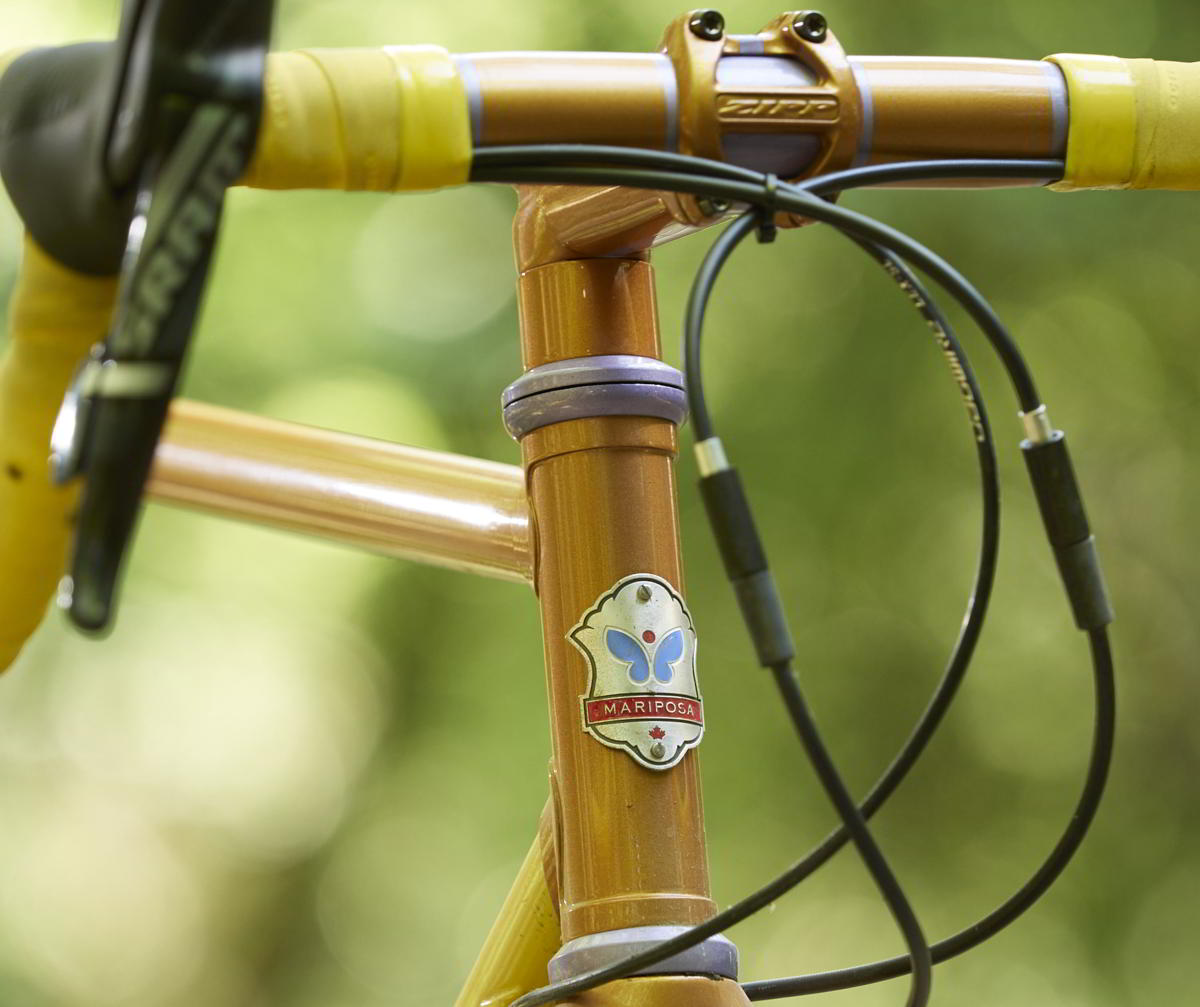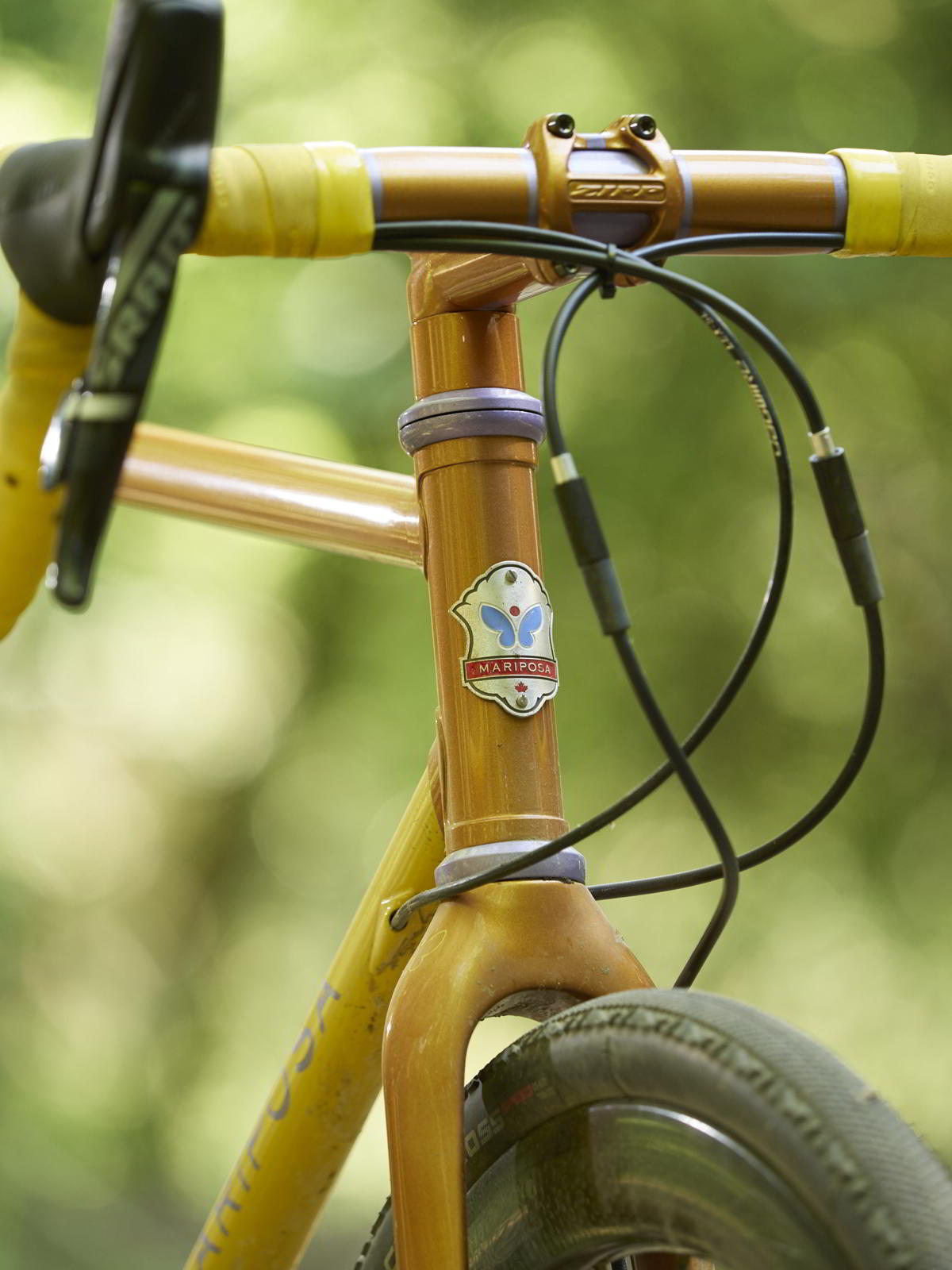Review: Mariposa Cyclocross
Traditional custom steel gets a boost with modern touches


The riders ahead of me moved faster than I could over the bumpy dirt path. I got thistle whipped on the shoulder on one of the fast descents. It was a hot, dry day. I guess only the nastiest plants were healthy at that part of the summer.
I had met Michael and Dede Barry and Peter Morse, all of Mariposa Bicycles, early that morning for a 85-km ride on mostly gravel roads and trails northeast of Toronto. It would be my first test on Mariposa’s cyclocross frame. Mariposa is the custom-bike brand that Michael’s father, Mike Sr., founded 47 years ago. Not long after Michael retired from the pro peloton in 2012, he moved to Toronto from Girona with Dede and their two boys. The brand, the family business, was relaunched in July 2014.
Mariposa Cyclocross (as tested)
| Components | SRAM Force 1 |
| Wheels | Zipp Firecrest 303 carbon clincher |
| Sizes (cm) | 55, but each frame is custom-built |
| Price | $3,800 (frame and fork). $10,200 (as tested) |
| Website | mariposabicycles.ca |
The Mariposa cyclocross bike has many traditional features. “The geometry for the bikes that we build come out of the same ideas and theories that my dad has used since the start,” Michael said. He also cited the flat top tube and incremental sizing that the Mariposas all feature—no compact geometry—as other enduring elements. The bike I rode was made of a mix of steel Columbus Spirit and Zona tubes joined at long-point lugs.
By the time Michael finished with Team Sky, he had spent more than a decade racing on carbon bikes. One of the first bikes he made after coming home was actually a steel replica of one of his last race bikes. “The steel bike had all the same parts, same dimensions. I wanted to make it as close as possible. Then, I took it to the Pyrenees and rode it on many of the same roads that I had trained on. The first thing I noticed is that, on long rides, I didn’t feel as fatigued, especially after long climbs and bumpy surfaces. The steel absorbed the vibrations in the road more than carbon fibre.”
Barry also pointed out another feature steel brings to a frame: flex. That four-letter F-word is usually something bike manufacturers keep out of frames. But Barry said that a bike needs flex—and not just at the seatstays—to provide the best ride. “When a bike is too stiff, it will skip around and not hold the road. So, you want a bike that planes well over the surface. You also want to find a good balance between rigidity and springiness. The springiness keeps your legs from fatiguing as quickly and provides a return of energy as well.”
While the ‘cross bike has all those classic touches, it’s not a retro machine. It comes with a Ritchey cyclocross disc carbon fork, SRAM Force 1 with a 46-tooth ring, 11-32 tooth cassette and 160-mm rotors. Peter Morse, who paints Mariposa bikes and is responsible for the bronze, metallic lavender and mustard yellow frame I rode, had some input on another contemporary touch: the internal cable routing. Morse has ridden cyclocross for years, including racing in Europe as part of the Canadian national team and on a Dutch team. The internal routing hides the cables away to make the bike easier to grab for lifts over barriers or for shouldering the bike. The cable that runs to the rear derailleur has end-to-end housing to keep mud and gunk away. Usually Morse would have to replace cables throughout a ‘cross season as they got ruined by dirt and in turn ruined the shifting. With the full housing, he might have to make a change once a season, or not at all.
On my first ride, the only thing that got on the bike was dust – not exactly what comes to mind when you think of cyclocross. Still, the bike was perfect for those conditions, too. As we rode down a track that was ATV -wide, we faced wheel ruts that were sandy. The 35c tires helped me keep rolling well, although I should have dropped the tire pressure beforehand. Had it been mucky, there was plenty of clearance between the tires, chainstays and bottom bracket to keep things from getting gunked up.
We finished our ride as the afternoon was starting. I was more than 40 km from home. The Mariposa folks offered me a ride to get me a little closer to where I had to go. Since I was still feeling pretty fresh even after 85 km in the heat, I thought I’d continue with my testing. I took many opportunities to duck into city parks and ravines not only to see what the bike could do, but for kicks, too. On my following test rides, I continued to favour parks with stretches of light singletrack and short, sharp climbs. I was impressed by how balanced the bike is in the corners and through the ups and downs.
When it was time to give the bike back, I knew it wasn’t for me. As a “stock” bike from a custom builder such as Mariposa, it never was. Barry said my light body type might merit lighter steel. While the 55-cm tester bike fit me pretty well, I can imagine how dialed a 54-cm frame—a 54-cm frame made for me—might perform.

